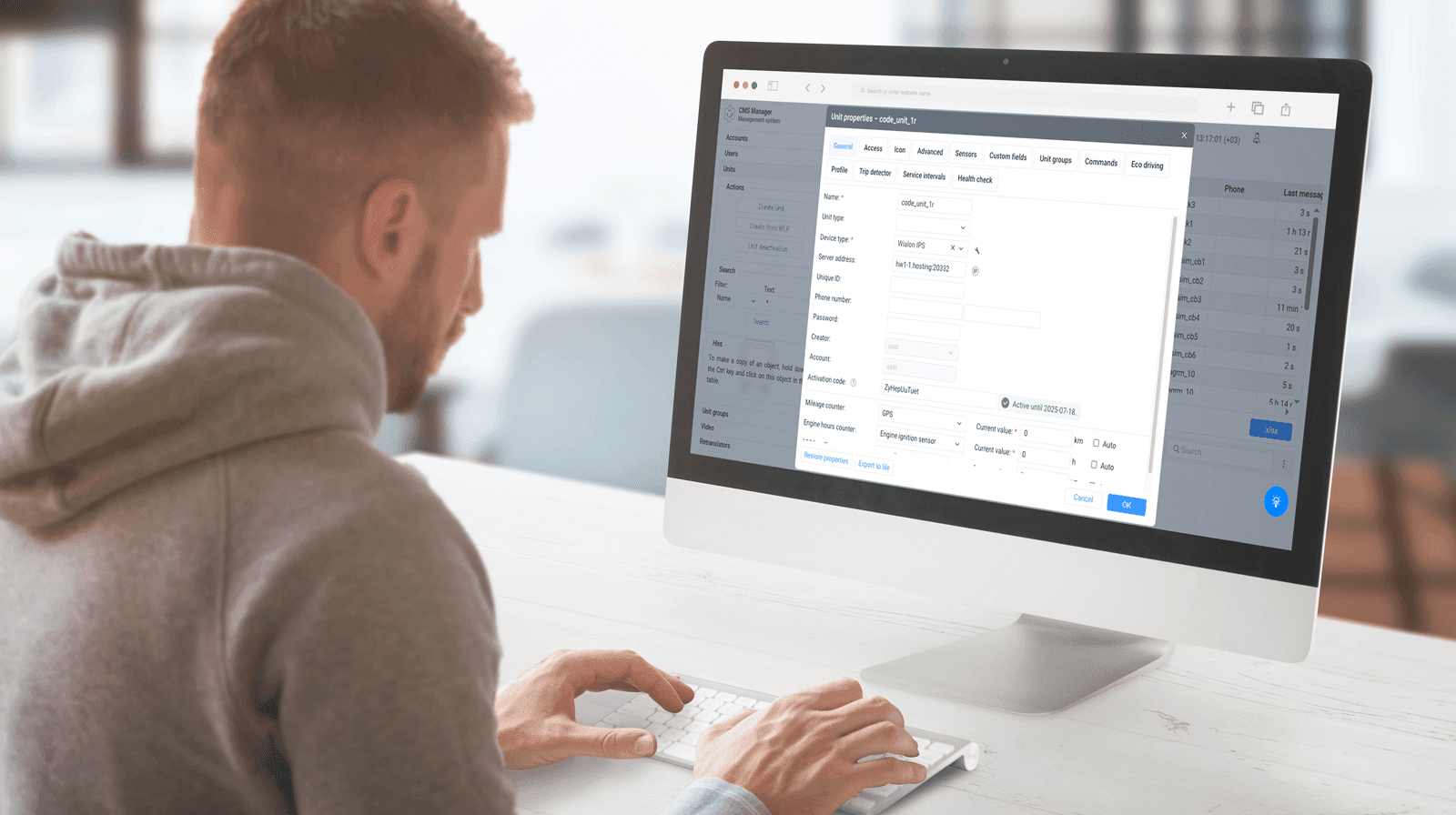Wialon partners have traditionally worked with a monthly billing model — a convenient method for many, but not always ideal for telematics service providers with their own partner networks or those managing short-term projects. That’s why we’re introducing a new, more flexible billing method based on unit activation codes. It’s designed to simplify service providers’ operations, improve billing accuracy, and reduce administrative overhead.
In this article, you’ll learn how the new method works and be able to decide whether it’s the right fit for your business.
Why use unit activation code billing?
The new billing method is especially useful for service providers who operate through their own solution reseller networks or manage seasonal and short-term projects — two scenarios in which the standard monthly billing model isn’t always the most practical or cost-effective.
If you have your own partner network, you’ve likely faced this issue: distributors create, delete, or recreate units without notifying you. As a result, inactive units remain in the system and continue to generate charges, leading to billing inaccuracies and additional manual work to figure out which units are actually in use.
Similarly, if your business involves short-term projects — such as seasonal agricultural activities, fleet rentals, sports events, or construction projects — you may only need to track vehicles for a limited time. The same applies to container shipping: once a cargo arrives, real-time monitoring is often no longer needed — especially when the GPS tracker is single-use. But unless you manually deactivate each unit at the right moment, you could end up paying for weeks when they’re not in use.
A billing method based on unit activation codes helps address both challenges by offering:
- Automation: Units are activated for a specific period and automatically deactivated when the code expires — no manual work required.
- Transparency: Billing is tied to the code, not the unit. You pay once when the code is applied, and the unit stays active for the entire validity period — with no extra charges.
- Control: You decide when and for how long a unit should be active, and can reassign codes as needed — for example, when one vehicle no longer needs tracking and you want to activate another.
Therefore, if your operations involve a partner network of your own or temporary projects, we recommend considering this new billing method.
Pilot run by Syscom
Syscom, a Wialon partner from Mexico, was the first to test the new unit activation code billing method. The company operates under a business model in which it delivers Wialon-powered solutions to its own network of partners, who then offer these services to their end clients.
This setup allows Syscom to scale Wialon’s presence across diverse markets, but it also created a significant challenge: managing payments across multiple layers of their partners and clients proved complex and time-consuming. Under their existing postpaid model, they often faced issues such as billing confusion, delayed license renewals, and difficulties ensuring charges reflected real usage.
The new model turned out to be a great match for their operations. By letting their partners manage and use activation codes themselves, Syscom no longer had to handle licenses manually. (Yes, you can give these codes to partners in your network!) As a result, the company significantly reduced operational overhead and could focus more on growing its client base instead of constantly chasing renewals.
“Thanks to this payment model, our partners — distributors of our Wialon-powered solutions — can manage licenses more efficiently and independently. It helped us reduce internal work and allowed us to focus on sales,” said Carlos Wong, Product Manager at Syscom.
The introduction of unit activation code billing came at a crucial time, as some of their partners were considering switching to competitors with more flexible terms of payment. The new model helped Syscom retain these distributors and even grow its base to around 10,000 units since the transition began in February 2024.
How it works
Getting started is simple — whether you're already using Wialon or just exploring it:
Step 1: Talk to our team
Contact your Partner Success Manager — or reach out to us if you're new to Wialon — to align on pricing, code quantities, and their validity periods. Once enabled, unit activation code billing becomes the only billing method for your service — units will no longer be billed monthly. All Wialon features remain fully available.
Step 2: Access and manage codes in CMS Manager
You’ll get access to the activation codes window in CMS Manager. Here, you can assign codes to units, monitor activation and expiration times, reassign codes, filter by unit assignment, and perform bulk operations. Expired codes are automatically excluded, and units are deactivated when codes expire — no need to track dates manually.
Step 3: Work with your own partner network
You can choose to share codes with the distributors of your Wialon-powered solutions and grant them access to the activation code window. Even without access to the window, distributors can still apply codes manually — for example, using a code received via email.
Step 4: Control unit activity with codes
Units remain active only while a valid code is assigned. Once it expires or is removed, the unit is deactivated automatically. You can also remove a code early and assign it to another unit or project. Deactivated units stay visible and ready for reuse.
Wialon also prevents duplicate code use, clears expired codes daily, and logs all code-related actions for easy tracking and auditing.
So, if you’re already a Wialon partner, contact your Partner Success Manager to get started.
If you’ve never worked with Wialon, feel free to write to us at sales@wialon.com. You can also find more information about the billing method based on unit activation codes in the Wialon help center.
Subscribe to our blog to stay up to date on the latest enhancements and features in Wialon.













